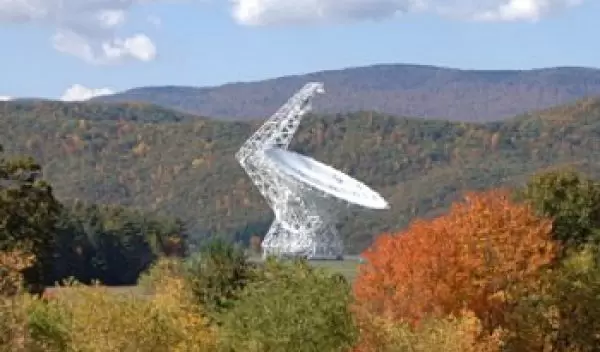
Magnetic Fields in Far Away Galaxies Observed to be 10 Times Stronger than those in Milky Way
Using the National Science Foundation (NSF)-funded Robert C. Byrd Green Bank Telescope, the largest steerable radio telescope in the world, researchers peered into the early universe and obtained the first direct measurement of a nascent galaxy's magnetic field as it appeared 6.5 billion years ago.
The astronomers report that the magnetic field they measured in this distant "protogalaxy" is at least 10 times greater than the average value in the Milky Way.
It is thought that slowly rotating galaxies generate magnetic fields, in a "dynamo effect," that grow very gradually as they evolve over 5 billion to 10 billion years.
Astronomers believe the magnetic fields within our own Milky Way and other nearby galaxies control the rate of star formation and the dynamics of interstellar gas. That the magnetic field observed in this young galaxy is much stronger than expected, poses challenges to conventional theories on the formation of stars and galaxies.
The researchers' results were published in the October 2 issue of the journal Nature.
The researchers who reported the findings were Art Wolfe of the University of California at San Diego; Regina Jorgenson, a University of California at San Diego graduate student in physics; Carl Heiles, a professor of astronomy at the University of California at Berkeley; and Timothy Robishaw, a graduate student at the University of California at Berkeley.
To learn more about this discovery, read the University of California at San Diego news release.


